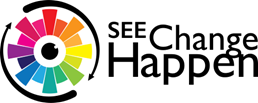Diversity and Inclusivity – How To Test Your Organisation For Homophobic/Transphobic Attitudes
According to Equalityhumanrights.com in 2020, 82% of people said they were not prejudiced towards transgender people, (14%) reported that they were a little prejudiced, 2% said they were very prejudiced and a further 2% did not know, which suggests in every 100 employees in an organisation, approximately 16-18% have a prejudice against trans people. With this in mind, many businesses are increasingly wondering how to test their organisation for transphobic and homophobic attitudes.
Joanne Lockwood CEO and Founder of SEE Change Happen says: “Homophobia and transphobia can show themselves through physical, verbal or emotional harassment, or more covertly through microaggressions, marginalisation and gaslighting which can be harder to measure. The stigma can also be different between gender and sexual orientation with a gay man generally being more stigmatised than a lesbian, but trans women being more stigmatised because of the narrative that they are a threat to cis women and children.”
With 1 in 8 LGBTQ+ people revealing they don’t feel confident reporting homophobia in the workplace, Joanne Lockwood argues how to test for, identify and uncover these often hidden prejudices in the workplace and how to action change.
Clearly, bullying or harassment accusations are a clear indicator of a toxic work culture, as is a lack of diversity but there are more subtle clues including:-
Positive People Experiences. Are LGBTQ+ candidates, leaders, employees, stakeholders and customers all experiencing measurable and equal Positive People Experiences? Do you regularly host employee engagement surveys to test out psychological safety asking questions like “Do you feel you are valued?” and “Can you bring your whole self to work”? Surveys can help detect an undercurrent and even if anonymous can be cross-referenced with demographics. Testing the experience of people who are gender transitioning can give some clear answers.
Distinctive group segregation. If LGBTQ+ employees are not being fully included this is a strong indicator. Do gay or transgender employees have a strong sense of belonging and fully take part in group activities if they would like to? Do they put themselves forward for training and leadership roles or do they often stick together or opt out because they feel marginalised?
Hiring and promotion discrimination. There are several risks. The first is that people who are marginalised and not celebrated for their achievements are not hired or promoted and only individuals who fit the mould are considered. Secondly, if they are promoted or hired in a poor work culture then there is the risk of token hiring or promoting to cover all bases, which in turn fuels imposter syndrome. They may also be promoted and then get no support from their colleagues so end up leaving.
Unfair delegation of tasks. If you suspect a pattern whereby LGBTQ+ employees are consistently allocated to tasks that are displeasing or completely irrelevant to their job role, this may well be a sign of underlying discriminatory attitudes.
Misgendering, bias, micro-aggressions, ridicule, and exclusion. These are still rife in business and coming out or feeling part of a team at work can feel very risky. Micro-aggressions mean you can’t quite put your finger on the issue. Perhaps you are tolerated but there is an undercurrent as people whisper about you, make a snide remark or you are not invited to things. It is presented in the same way by closet misogynists and racists. The result is destabilisation and a lack of psychological safety often leading to absence and quiet quitting.
Steps to be taken…
- Negotiate policies. It is ineffective and counter-intuitive to negotiate policies around LGBTQ+ inclusion without the voices of those in that community. How can companies address an inclusion issue without an inclusive approach? Include all voices and integrate them into policy negotiations. This may likely include introducing a gender expression policy.
- Report discriminatory behaviour. Is there a culture where people hide behind ‘its just banter’? Businesses need to actively outline the unacceptable nature of anti-trans, anti-LGBTQ+ and any other forms of discriminatory behaviour. By vigorously outlining standards, having a policy statement including acceptable language, and having clear whistle-blowing channels, individuals will have avenues available to them to report any harassment or issues that they are encountering, ensuring anonymity if required. Move from denial to official scrutiny and take a deep look at work culture, checking for reactions to big supporting statements put out by the organisation. Don’t paper over toxic comments and behaviour.
- Discriminatory recruitment. Go back to basics with the hiring process. The first thing to assess is the tone used in the vacancy advertisement – do your record-keeping methods and dress codes discriminate against trans people for instance? Make sure the job application only asks for relevant information to the role and doesn’t ask intrusive questions. Create positive narratives. Make sure your process is fair, the best person is selected for the role and the process is transparent.
- Confidentiality. There is no blanket rule for transgender individuals with regard to their gender identity or transition being public knowledge so protecting confidentiality may be vital.
- Allies and role models. Having supportive allies, including those in senior positions and peers, provides fundamental support for LGBTQ+ employees. Creating networking groups or just having visible LGBTQ+ role models can help embed inclusion across the organisation.
- Focus on education and myth-busting. Positive and clear messaging and values mean employees, stakeholders and customers are quite clear about where the company stands on discrimination. Managers should be offered training around the various issues that the community faces if required.
- Neutral spaces. Providing gender-neutral spaces and facilities is one step towards addressing an inclusion issue with an inclusive resolution.
Author: Joanne Lockwood, a Diversity & Inclusion & Belonging Specialist





